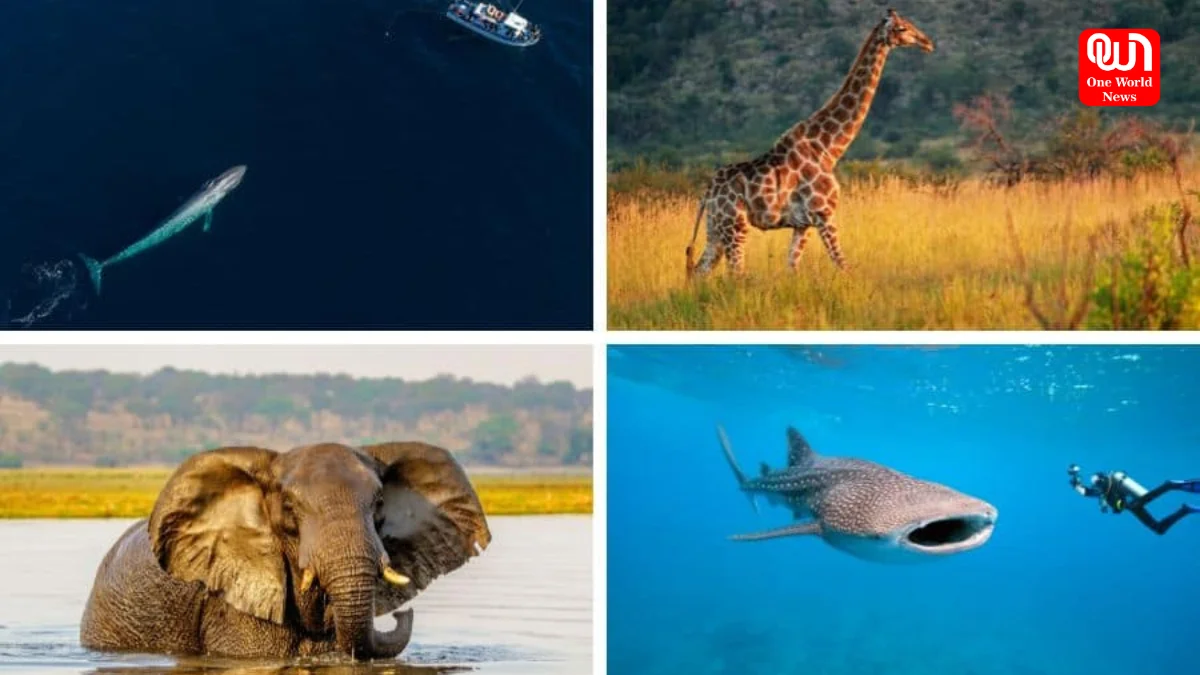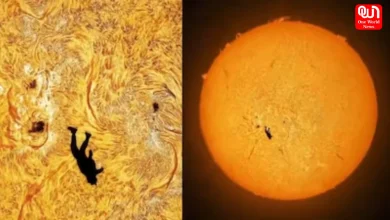Meet the Giants: Where to See the 10 Largest Animals on Earth
From blue whales to African elephants, discover the 10 largest animals on Earth and the best places around the world to spot these incredible creatures.
Meet the Giants: Explore the 10 Largest Animals on Earth and the Best Places to See Them in the Wild
With their sheer size, they inspire awe. From the deepest realms of the oceans to vast savannas, the biggest animals on Earth capture fascination like no other. Spotting them in their natural habitats is an unforgettable experience, especially for someone interested in wildlife and adventure travel. A guide on the ten largest animals on the planet and where to observe them in the wild.
1. Blue Whale – The Real Ocean Giant
A blue whale is the giantest animal that ever lived: it changes from 180-200 tons and measures as long as 30-33 meters. Even with all this size, it is an elusive and peaceful giant. People can spot them in places such as Monterey Bay in California, the Azores in Portugal, or Sri Lanka’s southern coast during these migration seasons.
2. African Elephant – The Largest Land Animal
Weighing nearly 12,000 lbs, the African elephant is the heaviest and tallest land mammal on earth. The majestic creatures roam across savannas and forests in Africa. To get into the wild space for safari, visit parks like Chobe National Park and Amboseli National Park.
3. Colossal Squid – The Mysterious Deep Sea
Little seen, the colossal squid is almost certainly one of the giant invertebrates because it estimates lengths up to 46 feet. It is one of the rarest creatures found in dark, icy waters of the Southern Ocean, especially in Antarctica, it mostly gets studied unintentionally through bycatch, without a clear understanding of exactly how marine biologists go about studying it.
4. Giraffe – Tallest Animal on Land
Not the heaviest, but the tallest, growing as high as over 18 feet, these herbivores easily caught sight in their visit to East Africa countries, namely Tanzania and Kenya, specifically at Serengeti and Maasai Mara reserves.
5. Whale Shark – The Largest Fish in the Sea
The biggest fish species known to exist is the whale shark, growing up to 40 ft long. Despite this size, they are gentle filter feeders. Places such as Isla Holbox (Mexico), Ningaloo Reef (Australia), and the Philippines offer opportunities to swim in the company of whale sharks.
Read more: A Kiss to Remember: National Kissing Day
6. Saltwater Crocodile – The Reptile with the Biggest Size
The largest living reptile is the saltwater crocodile, reaching a size of over 23 feet in some males. It is found in northern Australia and Southeast Asia, as well as along the eastern coast of India. They are usually seen in estuaries, rivers, and coastal areas.
7. Brown Bear (Kodiak) – The Largest Land Mammal of Carnivorous Type
It weighs over 1500 pounds, inhabiting the Kodiak Archipelago in Alaska, while the Kodiak bear, one subspecies of the brown bear, rivals that of the polar bear. The best time to see one is during the salmon spawning season.
8. Polar Bear – An Apex Predator in the Arctic
Another large land carnivore contender is the polar bear, which survives in the Arctic. To see this animal in the wild, head to Churchill of Manitoba in Canada, better known as “Polar Bear Capital of the U.S.” – particularly during October and November.
9. Southern Elephant Seal – The Largest of the Seal Species
It weighs as much as 8,800 pounds and may stretch to about 20 feet long. They exist in the sub-Antarctic region, while South Georgia Island is one of the best places to watch their beach battles during their mating season.
10. Ostrich – The Largest Bird on Earth
The ostrich is the largest living bird and can grow as tall as 9 feet to weigh not less than 300 pounds. While these flightless birds cannot fly, they are found in open plains all through Africa, moving fast. Travel to Oudtshoorn at South Africa or Serengeti to see them in their free roaming.
Read more: World Giraffe Day: Celebrating the Tallest Land Animal Annually.
Conclusion: Witness Giants of Nature in the Wild
Due to their astonishing great sizes, these animals span the entire length from ocean depths to broad grasslands. Spotting these giants forms part of a lifetime event in reminding us about the planet’s extraordinary wildlife. Whether you wish for the thrill of a safari or a maritime undertaking, ensure to include these places in your travel bucket list.
We’re now on WhatsApp. Click to join.
Like this post?
Register at One World News to never miss out on videos, celeb interviews, and best reads.








